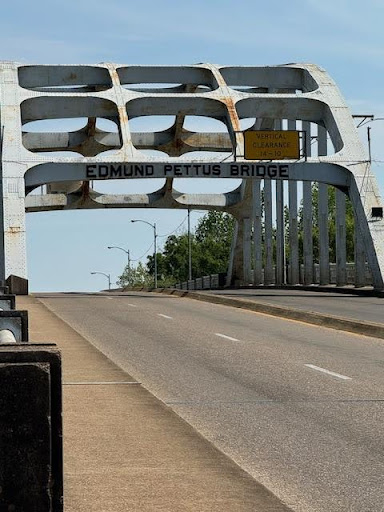The Legacy of the Edmund Pettus Bridge

A Symbol of Courage and Progress
The Edmund Pettus Bridge, located in Selma, Alabama, stands as an enduring symbol of the Civil Rights Movement and the struggle for racial equality in the United States. This iconic bridge, named after a Confederate general and U.S. Senator, has transformed from a mere crossing over the Alabama River to a powerful beacon of hope, resilience, and social change.
The Historical Significance
The bridge gained national attention on March 7, 1965, a day that would forever be etched in the annals of American history as “Bloody Sunday.” On that day, approximately 600 civil rights marchers, led by John Lewis and Hosea Williams, set out from Selma to Montgomery to demand the right to vote. As they attempted to cross the Edmund Pettus Bridge, they were brutally attacked by state troopers and local law enforcement officers, who used tear gas, billy clubs, and other forms of violence to disperse the peaceful protesters.
The images of the brutal assault were broadcast nationwide, shocking the conscience of the American public and galvanizing support for the Civil Rights Movement. The march, and the vicious response it provoked, highlighted the systemic racism and injustice that African Americans faced, particularly in the South. It also underscored the urgent need for federal legislation to protect voting rights.
The Impact of Bloody Sunday
Bloody Sunday was a turning point in the fight for civil rights. The public outcry that followed the events on the Edmund Pettus Bridge pressured President Lyndon B. Johnson and Congress to take immediate action. Just a few days later, President Johnson addressed the nation, calling for the passage of the Voting Rights Act. His speech famously concluded with the words “We shall overcome,” echoing the anthem of the Civil Rights Movement.
On August 6, 1965, the Voting Rights Act was signed into law, prohibiting racial discrimination in voting and ensuring that all Americans, regardless of race, had the right to vote. This landmark legislation was a significant victory for the Civil Rights Movement and a testament to the power of peaceful protest and civil disobedience.
The Bridge Today
Today, the Edmund Pettus Bridge remains a site of pilgrimage and reflection. Each year, thousands of people from all walks of life gather in Selma for the annual commemorative march, retracing the steps of those brave men and women who risked their lives for justice and equality. The bridge serves as a poignant reminder of the progress that has been made and the work that still lies ahead in the ongoing struggle for civil rights.
In recent years, there has been a growing movement to rename the bridge, given its association with Edmund Pettus, a figure who represents the very antithesis of the values the marchers stood for. Advocates for the renaming argue that the bridge should honor the legacy of those who fought for civil rights, such as John Lewis, rather than a man who fought to uphold slavery and segregation.
Educational and Cultural Importance
The Edmund Pettus Bridge is not only a historical landmark but also an educational tool. Schools and universities incorporate the story of the bridge into their curricula, teaching students about the Civil Rights Movement and the significance of nonviolent resistance. Museums and civil rights organizations offer tours and programs that provide deeper insights into the history and impact of the Selma marches.
Moreover, the bridge has been featured in numerous films, documentaries, and books, further cementing its place in the cultural memory of the nation. The 2014 film “Selma,” directed by Ava DuVernay, brought the events of Bloody Sunday to a new generation, highlighting the bravery of the marchers and the importance of their cause.
The Continuing Struggle for Equality
While the Voting Rights Act of 1965 was a monumental achievement, the fight for racial equality and justice continues. Recent years have seen efforts to roll back voting rights protections, disproportionately affecting minority communities. The Edmund Pettus Bridge stands as a powerful reminder of the sacrifices made to secure these rights and the need to remain vigilant in their defense.
The legacy of the bridge transcends its physical structure; it embodies the spirit of perseverance and the unwavering belief in the fundamental right to equality. As we reflect on the history of the Edmund Pettus Bridge, we are reminded of the importance of standing up against injustice and the impact that collective action can have on shaping a more just and equitable society.
Conclusion
The Edmund Pettus Bridge is more than just a bridge; it is a symbol of the courage, resilience, and determination of those who fought for civil rights. It serves as a testament to the power of peaceful protest and the enduring fight for equality. As we honor the legacy of the bridge and the heroes who crossed it, we must also recommit ourselves to the ongoing struggle for justice and the protection of the rights for which they bravely marched.
So, whether you visit the bridge in person or learn about its history from afar, the Edmund Pettus Bridge stands as a powerful reminder of the progress that has been made and the work that still needs to be done to achieve true equality for all.
